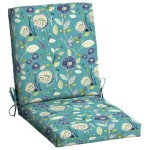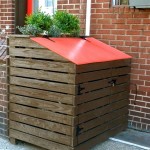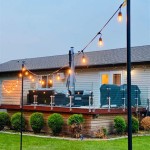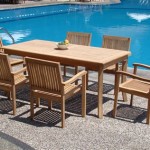Outdoor Fireplace With Grill Designs: Combining Ambiance and Functionality
An outdoor fireplace with a grill represents a harmonious marriage of aesthetics and practicality for outdoor living spaces. These structures provide a focal point for gatherings, offering warmth and visual appeal while simultaneously facilitating outdoor cooking. This article explores various design approaches, material considerations, and functional aspects associated with outdoor fireplaces incorporating grilling features.
The integration of a grill into an outdoor fireplace design is not merely an add-on; it requires careful planning to ensure both the fireplace and the grill operate effectively and safely. Considerations range from the size and placement of the grill to the ventilation and fuel source, all of which impact the overall usability and longevity of the structure. Selecting the appropriate materials that can withstand high temperatures and weather conditions is also paramount.
Key Point 1: Design Styles and Aesthetic Integration
The design of an outdoor fireplace with a grill should complement the existing landscaping and architectural style of the home. The primary goal is to create a cohesive and inviting outdoor space. This involves considering the form, scale, and materials used in the fireplace construction.
One common approach is a traditional design, often employing brick or natural stone veneer. These designs typically feature a large, open firebox with a built-in grill grate. This design style evokes a sense of rustic charm and can be customized with decorative elements such as corbels, arches, and hearth extensions. The grill itself might be a simple, adjustable grate or a more elaborate stainless steel unit.
Conversely, modern designs favor clean lines, minimalist forms, and the use of materials like concrete, steel, and glass. A modern outdoor fireplace with a grill might incorporate a sleek, rectangular firebox with a hidden gas line and a stainless steel grill integrated seamlessly into the structure. Such designs emphasize functionality and visual simplicity.
Another popular option is a hybrid design that blends elements of both traditional and modern styles. This approach might incorporate natural stone with a contemporary firebox shape or combine exposed brick with stainless steel accents. Hybrid designs offer a high degree of customization and can be tailored to suit a wide range of preferences.
Beyond general style considerations, the size and shape of the fireplace should be proportional to the surrounding area. A massive stone fireplace might overwhelm a small patio, while a small, understated design might get lost in a large, expansive backyard. Careful consideration of scale and proportion is essential for creating a visually pleasing and functional outdoor living space.
Furthermore, the aesthetic integration extends to the surrounding landscaping. Incorporating features like outdoor seating areas, pergolas, and strategically placed plants can enhance the overall ambiance and create a welcoming environment around the fireplace and grill.
Key Point 2: Material Selection and Durability
The materials used in the construction of an outdoor fireplace with a grill must be durable, weather-resistant, and capable of withstanding high temperatures. The choice of materials will impact both the appearance and the longevity of the structure.
Brick is a popular choice due to its durability, aesthetic appeal, and ability to withstand high temperatures. Firebrick is specifically designed for use in fireplaces and other high-heat applications. It is denser and more resistant to cracking and spalling than standard bricks. Clay brick is also a viable option, offering a range of colors and textures. Brick requires mortar joints, which need periodic maintenance to prevent water penetration and structural damage.
Natural stone, such as granite, limestone, and sandstone, provides a natural and aesthetically pleasing look. Stone is highly durable and resistant to weathering. Proper installation is crucial to ensure the stability and longevity of a stone fireplace. The type of stone should be selected based on the climate and the desired aesthetic. Some stones are more porous than others and may be more susceptible to staining or damage from freezing temperatures. The mortar used with natural stone should be compatible with the type of stone to prevent discoloration or deterioration.
Concrete, both cast-in-place and precast, is a versatile material that can be molded into various shapes and finishes. Concrete offers a modern aesthetic and can be stained or colored to match the surrounding landscape. Reinforced concrete is necessary for structural integrity, especially in larger fireplaces. Concrete is relatively low-maintenance and resistant to weathering, but it can be susceptible to cracking if not properly mixed and cured.
Steel, particularly stainless steel, is commonly used for the grill components and often for structural elements within the fireplace. Stainless steel is highly resistant to corrosion and high temperatures, making it an ideal material for grilling surfaces and firebox components. However, steel can expand and contract with temperature changes, so proper allowance for thermal expansion must be incorporated into the design.
The choice of materials also extends to the surrounding landscaping. Using materials that complement the fireplace and grill, such as stone pavers for a patio or gravel for a walkway, can create a cohesive and visually appealing outdoor space.
Key Point 3: Functionality and Safety Considerations
The functionality of an outdoor fireplace with a grill is paramount. The design should facilitate comfortable and efficient grilling while ensuring the safety of users and the surrounding environment.
Ventilation is critical for proper combustion and smoke management. A well-designed chimney or flue is essential for drawing smoke away from the cooking area and preventing it from billowing back into the face of the user. The height of the chimney should be sufficient to create adequate draft. Proper ventilation also helps to prevent the buildup of carbon monoxide, a dangerous byproduct of combustion.
The size and type of grill incorporated into the fireplace should be appropriate for the intended use. A small grill might be suitable for cooking for a small family, while a larger grill with multiple burners might be necessary for entertaining larger groups. The grill can be a simple, adjustable grate or a more elaborate gas or charcoal grill. The grill should be easily accessible for cleaning and maintenance.
Fuel source is another important consideration. Wood-burning fireplaces offer a traditional aesthetic and can provide a unique flavor to grilled food. However, wood-burning requires more effort and attention than gas or charcoal. Gas grills offer convenience and precise temperature control, while charcoal grills provide a distinct smoky flavor. The choice of fuel source depends on personal preference and the intended use of the grill.
Safety features are essential for any outdoor fireplace with a grill. A spark arrestor on the chimney prevents embers from escaping and potentially igniting nearby vegetation or structures. A hearth extension provides a non-combustible surface in front of the fireplace, protecting the surrounding area from sparks and hot embers. Proper clearance from flammable materials, such as trees and siding, is crucial to prevent fires. A fire extinguisher should be readily accessible in case of emergency.
The placement of the fireplace and grill should also be carefully considered. It should be located in an area with good ventilation and away from prevailing winds that could blow smoke towards the house or neighboring properties. The surface around the fireplace should be level and stable to prevent tipping or collapse. Adequate lighting should be provided to ensure safe grilling conditions, especially at night.
Consideration should also be given to storage for fuel and grilling accessories. A built-in storage area for wood, charcoal, or propane tanks can help to keep the area tidy and organized. A counter or shelf near the grill can provide a convenient space for preparing food and storing utensils.
In summary, designing an outdoor fireplace with a grill requires a holistic approach that considers aesthetics, durability, functionality, and safety. By carefully selecting materials, incorporating proper ventilation, and implementing appropriate safety measures, it is possible to create an outdoor space that is both visually appealing and functionally efficient for years to come.

Outdoor Cooking Fireplace Backyard Designs

Five Fabulous Outdoor Fireplace Ideas Coogans Landscape Design

20 Modern Fireplace Design Ideas For Outdoor Living Spaces Designs Stone Fireplaces Cooking Grills

Outdoor Fireplace Design Ideas Getting Cozy With 10 Designs Unilock

Easy Affordable Outdoor Fireplace Design Plans Cad Pro

Traditional Stone Outdoor Fireplace With Brick Oven And Grill Designs Backyard Patio

Landscaping Designs Containing Outdoor Fireplaces

Outdoor Fire Pit Fireplace Design Build Professional Install Oasis Living

Outdoor Fireplace With Built In Grill And Wood Storage

25 Outdoor Fireplace Ideas Fireplaces Fire Pits








